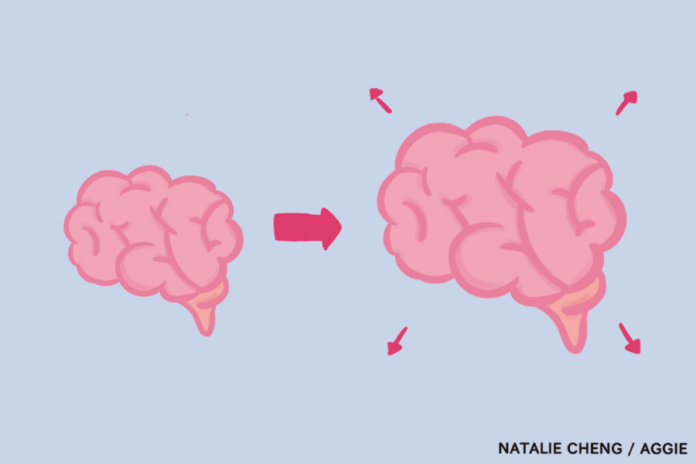UC Davis researchers found that human brain size has increased throughout the decades, which is connected to improved memory function
By MARLE LAMOUNTRY — science@theaggie.org
It’s often said that bigger is better, and in the case of human brains, this holds true — new research has found evidence of their growing size. Researchers at UC Davis Health have found that human brain sizes have grown 6.6% more in volume when comparing data of people born in the 1970s versus the 1930s. This compelling study not only offers insight into humans’ evolutionary history but also holds significant implications for our understanding of cognitive health, especially concerning dementia prevention.
Claudia Satizabal and Sudha Seshadri of the Framingham Heart Study found that the incidence of dementia is declining. Charles DeCarli, an author of the study, as well as a professor and director of the UC Davis Alzheimer’s Disease Research Center, wanted to investigate these changes in the brain’s biology.
“As a species, we’re getting taller, but what else has changed?” DeCarli said.
The study, published in The Journal of the American Medical Association (JAMA) Neurology, used data from the Framingham Heart Study and included data spanning as far back as the 1930s. Brain magnetic resonance imaging (MRI) scans as recent as 2019 quantified the scans, allowing researchers to analyze brain regions known to be correlated with dementia. These regions include the cortex, white matter and hippocampus.
DeCarli commented on factors that may have caused the increase in brain size.
“There are cultural changes for people born in the 1930s; they were born during the Great Depression and World War II, [and they] just came out of World War I around that time,” DeCarli said. “During the 1950s, after World War II, there was an expansion in the US population [and] social and economic boom — a fantastic period of time.”
Although genetics play a large part in brain health, other outside factors can also alter brain size. The researchers hypothesized that general enrichment in the environment, better overall health — especially concerning prenatal and postnatal care — and better food have led to the development of a “better” brain.
Matthew Pase, an associate professor from Monash University and co-author of the study, commented on these findings.
“What we found, essentially, is that people born in later decades have bigger brains and a larger head size compared to people born in older decades,” Pase said. “It’s quite cool when you think about it, that people’s brains are getting larger.”
One challenge the researchers faced was limited patient data, which only included a population of middle-class white individuals from Framingham, Massachusetts. This limited cohort representation does not accurately represent the entire US population, making it difficult for researchers to understand if their findings apply to everyone.
Researchers’ findings of the trend of increasing human brain size indicate hopeful prospects for dementia prevention and overall cognitive well-being. By exploring the connections between brain size, environmental influences and dementia risk, researchers may be able to transform the way we understand brain health and lessen the impact of dementia.
Written by: Marle Lamountry — science@theaggie.org




